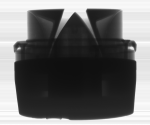For the last month or so I have been hell bent on quantifying the differences I hear from the different diaphragm materials and driver designs of the two inch throat variety. I think if I can hear it, I should be able to measure it, please note that I said should.
The current test pile consists of 2441's, 2445's, 2446's and 2450's with D16R2441's, D8R2445's, D16R2445's, D8R2450SL's and Truextent Be4008"s 8Ω.
I have extensively measured all of the possible combinations with the exception of the Be's in the 2441's and some patterns are emerging from the data that agree with my ears.
What I don't have is 8 and 16Ω versions of all of the diaphragms. It has been pointed out to me that most all of the really good / high end / top shelf drivers are 16Ω. If that is indeed the case then I must wonder why?
I have always bought the 8Ω versions (for home use) as I like to keep the amps as small as possible (with adequate head room of course) eliminating excess gain to keep the noise floor as low as possible, half the impedance, half the required drive voltage.
Following this logic, or lack of it, my question is this, is there a real sonic benefit to the 16Ω variety? Theoretical sonic advantages? Unless I buy a bunch more diaphragms, I am unable to answer this question for myself. Who would really know?
Thank you,
Barry.




 Reply With Quote
Reply With Quote













